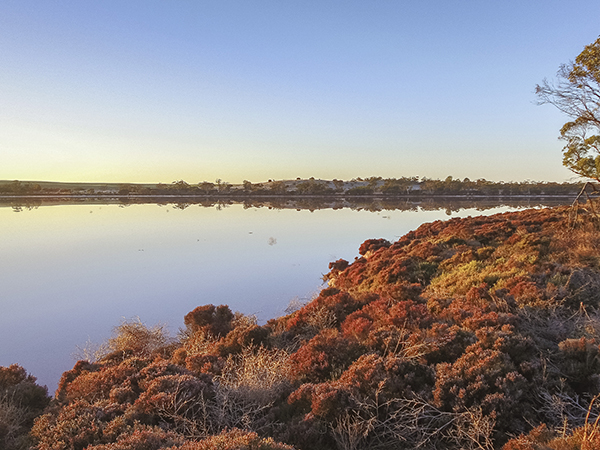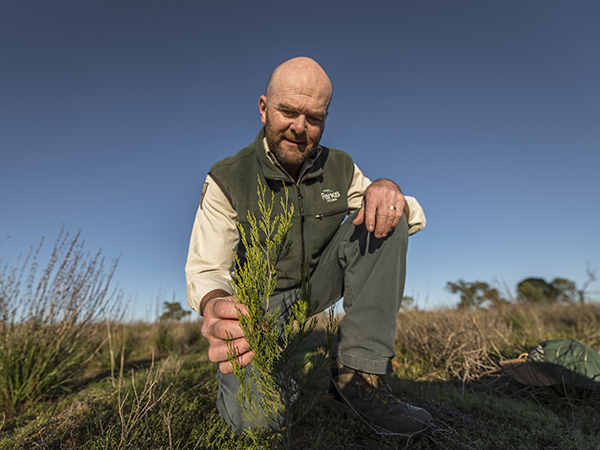The story that changed the land: restoration in Mallee country

After 100 years of degradation, native pine seedlings are now thriving in the Mallee. Photo: Annette Ruzicka
When the three Mallee parks in Victoria’s North West first came under Parks Victoria’s care, they were a sorry sight. After 150 years of pastoralism, young, native trees in the parks’ semi-arid woodlands were unable to grow. With booming feral rabbit and goat populations, an overabundance of kangaroos, and numerous water sources for these animals to drink from, native seedlings were fighting a losing battle. For over 100 years, native seedlings did not grow.
But thanks to landscape-scale management by Parks Victoria and its partners, the story is vastly different now. Livestock has been removed, dams have been closed and kangaroo, feral rabbit and feral goat populations have been kept in check for over 20 years.
Parks Victoria has worked with partners to protect species such as the endangered Major Mitchell’s cockatoo, and with Traditional Owners who provide critical expertise, helping recognise and protect cultural heritage.
Young pine, buloke and belah trees now grow healthy and strong, and in 12,000 hectares of formerly degraded woodlands, more than 1.6 million native seedlings have been planted.
This is the result of a decades-long, landscape-scale restoration project to return the Mallee to health.

Brendan Rodgers of Parks Victoria inspecting a native pine seedling. Photo: Annette Ruzicka
He works with contractors to keep populations of rabbits, goats and kangaroos in check, and to re-vegetate degraded woodlands. After years of careful park management, Hattah-Kulkyne National Park now provides healthy water systems, feeding areas and rest places for 12 migratory bird species.
Migrating birds are not the only species that benefit when rabbit, goat and kangaroo populations are kept in check. Healthy riverine and mallee woodlands, which have begun to recover under Parks Victoria management, also support the nationally vulnerable regent parrot, which nests in the parks’ towering river red gums.
Although only 500 of these birds were estimated to remain, a survey at nearby Annuello Flora and Fauna Reserve recorded 1600 in 2016, after an unusually wet season. This was three times the estimated number of adult birds and is a good sign that the park and surrounding environments are healthy and providing good breeding and feeding habitats.
Vanessa Oxley and her team were responsible for planting 1.4 million native seedlings in the Murray-Sunset National Park in 2017. Vanessa works for CO2 Australia, a landscape revegetation company partnering with Parks Victoria.
As a project officer, Vanessa brings all the pieces of the jigsaw together, from collecting seed and growing indigenous seedlings that once grew here naturally – to preparing and monitoring the soil, ensuring that the conditions are just right to plant.



